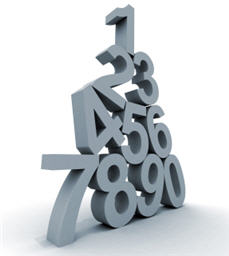How to Teach Ordinal Numbers


Numbers are typically taught early on in ESL courses. This means that students generally have very limited English abilities so it is best to proceed slowly, taking several classes if necessary to cover the material. The first time numbers are introduced, limit them to numbers one through ten and then build up to one hundred. Larger numbers can be introduced at another time.
Warm up
Your students are, at this stage, probably beginners so try to review material that was covered in the previous lesson and keep lessons enjoyable so that students will not develop an aversion to your classes. Lessons prior to this may include letters so you can play letter bingo. Each student should have a five by five grid. Have them fill in the grid with letters and then say letters at random until one or more students have gotten bingo.
Introduce Numbers
Use flashcards to introduce numbers one through ten. Flashcards should have both the numeral and the word for each number. This will probably also include introducing some new vocabulary so choose words that will be used often in your classroom and words where the plural form is made by simply adding -s. Words like teacher, student, book, pencil, and desk would all be appropriate. Use choral repetition for pronunciation practice and then drill using the flashcards.
Practice Numbers
If your students are not familiar with the Latin alphabet, they have probably been using worksheets to practice forming letters of the alphabet. You can use a similar worksheet to help them practice writing out numbers like one, two, three, etc. This is a good opportunity for them to practice letter and word spacing. If your students are familiar with the Latin alphabet, matching or fill in the blank exercises may be more appropriate.
Check
With beginners, it is important to check comprehension frequently. Students may be confused or hesitant due to lack of understanding but will often be unwilling or unable to ask for help. A group activity will get your students on their feet. One activity is to make groups with the same number of people as you call out. For example if you say “Four” students should make groups of four and when you call out the next number they should run around trying to get into appropriately sized groups. Another activity is to split the class into two to four teams. Each group should determine in what order students take turns and be given a portion of the board to write on. When you say a word aloud, the student whose turn it is should run to the board and write the numeral. If your students do very well, tell them they have to spell out the word and maybe later on, as a review activity, students have to spell out the word of the number that comes after the one you say aloud. At the end of the game, the group with the most points wins.
Introduce More Numbers
When your students are confident using numbers one through ten, introduce numbers zero to one hundred. Focus primarily on the numerals and pronunciation. It is a lot of new material to take in but there is a pattern so stressing one through ten as well as multiples of ten will be really important. The difficult part for most students will be eleven to nineteen and confusing numbers like thirteen with thirty. Keeping this in mind, practice difficult areas more often than others.
Practice
Make decks of cards for numbers zero to one hundred with numerals on one side and words on the other. For the purposes of this activity have students spread out the cards numeral side up. Students should play in groups of three to six. When you call out a number, the first student to say and smack the appropriate card gets to keep it. The winner is the student with the most cards at the end of the game. If your students are struggling with certain numbers, feel free to also write the numeral on the board but be sure to say it first. You can use this same deck later on to practice reading and the difference between -teens and multiples of ten.
Produce
Since you recently used bingo in your warm up, students should be familiar with the game. Ask them to fill out new grids with numbers zero through one hundred and play multiple times. You can also play another group activity where students stand in a circle and take turns saying numbers in order from zero to one hundred. Perhaps students say a number and then the name of the classmate who will say the next one or some other variation to keep things interesting. When they have mastered that, you can ask them to skip numbers with threes and sevens, including thirteen and seventy for example, to make it more challenging.
Review
Worksheets may be an appropriate review activity but any activity you played during your numbers classes, could be conducted again as a review.
Numbers are used often during ESL courses. Especially before lessons on time or something similar, a review is going to be necessary. Students will most likely continue to be confused by the pronunciation of certain numbers so special short challenge activities may be a nice break from other topics as they advance through their English studies.